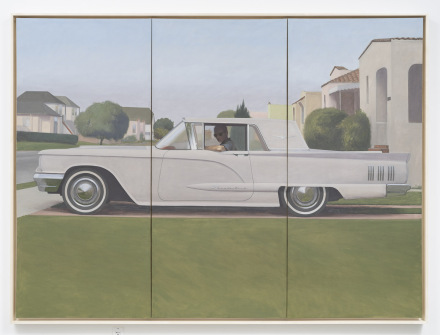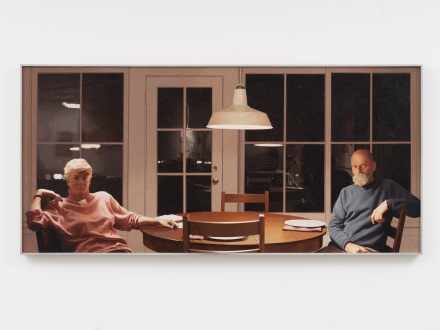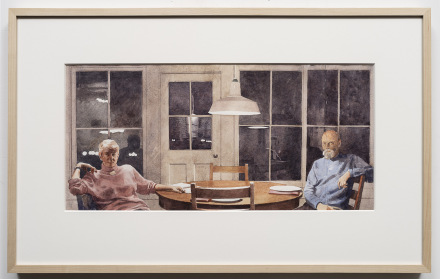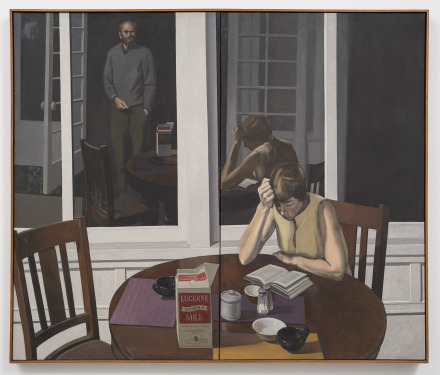
Robert Bechtle, 60 T-Bird (1964), via Gladstone
This month, Gladstone presents the first posthumous exhibition of works by Robert Bechtle, spanning nearly six decades of his practice. Highlighting important subjects he returned to throughout his lifetime, this expansive selection of paintings, watercolors, and drawings demonstrates the technical and conceptual ingenuity of his process that evolved over time and transformed approaches to realistic figurative painting in the United States. On the occasion of this exhibition. The show also marks the gallery’s first in the representation of the artist’s estate.

Robert Bechtle, Portrero Table (1994), via Gladstone

Robert Bechtle, Study for Portrero Table (1992), via Gladstone
In Bechtle’s works, classic cars, urban and suburban streetscapes of his native Bay Area in California, and portraits of himself and those close to him are transposed with a candor and familiarity that allows the viewer to absorb quotidian scenes with a heightened and sharpened awareness. Formally flawless, the artist captures every detail, shadow, and reflection to further draw the viewer into each quiet scene. While many of his works are depicted with realist precision, others are portrayed by employing a looser, Impressionistic technique, demonstrating the artist’s fluid ability to memorialize moments in time without one set approach. The works as a striking point of contrast with both contemporaries and luminaries of American painting history, transposing older methods and approaches to suburban sprawl, and imbuing modernity with a balanced, composed cool.

Robert Bechtle, Nancy Reading (1963-64), via Gladstone
The exhibition also features a series of significant portraits and self-portraits made throughout his career. In Potrero Table (1994), Bechtle depicts himself and art historian Whitney Chadwick, his second wife of nearly 40 years, sitting at the dining table at their house in Potrero Hill. With astonishing clarity, the artist meticulously captures every detail of the late-night scene. Frequently turning the lens back onto himself for the entirety of his artistic practice, Bechtle’s self-portraits lay bare the process of aging, and the physical and psychological changes that come with the lived experience. These tender and honest chronicles are essential clues to understanding Bechtle’s overall artistic oeuvre, the care he had for Whitney, and highlight his ability to separate from the constantly moving and evolving world in order to pause and reflect on his surroundings with clarity and rigor. Through intense concentration and sensitivity, Bechtle’s wide-ranging body of work chronicles his own life, filled with moments of repose, energy, and reflection.
The show closes April 29th.
Read more:
Robert Bechtle at Gladstone [Exhibition Site]



